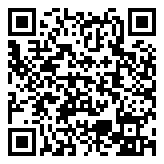Attend IT Blog
What is a BDR and Why Does Your Organization Need One?
Data backup always sounds like a simple process, but if you truly want to rely on your backup, it needs to be absolutely infallible. That is the objective behind an IT appliance known as the BDR, which stands for Backup and Disaster Recovery.
Good Backups vs Bad Backups
When you were in college, working on a big paper or presentation, you may have had the hindsight to drag the files over to a thumb drive or external drive, or email them to yourself, just to make sure you had a spare copy in case something went wrong.
That’s a backup, sure, but you needed to have the foresight to do it. You needed to manually stick a copy of the data somewhere, remember where it was, keep track of it, and hope you remembered to keep it updated as the original file changed.
That is a bad backup. Sure, it accomplishes the goal of having redundancy for a particular piece of information, but it’s only as reliable as a person is.
On top of that, thumb drives can be lost or stolen, and they break easily. They aren’t really designed for long-term storage. Your email inbox isn’t exactly the world’s best data repository either.
This was kind of an extreme case, but it highlights the factors that make a bad backup. If you have to think about it, act on it, or it relies on a single point of fallible data storage, it’s a bad backup.
A good backup has its own redundancies in place, and it doesn’t rely on human interaction to work—it simply does. There’s more to making a good backup, and that’s what we’ll be going over for the rest of this article.
A Backup Isn’t Just a Copy of Files
First of all, it’s important to understand just what your company data is. This will be different for just about any organization, but it’s likely you have a combination of standard files and data in directories and subdirectories on a centralized server. These will be things like Word documents, PDFs, Excel spreadsheets, PowerPoint presentations, signed and scanned documents, proposal templates, images, video, CAD files, and that sort of thing.
Then you might have certain applications that your organization uses that store data in one or more databases, or they have some proprietary way to store information that isn’t quite as cut and dry as a “folder full of files.” Essentially, a database is just a big file or series of files, but to a typical user, it might not be inherently clear how that data gets stored and where it is located.
Let’s take a look at our own helpdesk ticketing system.
When you submit a support request to us, whether it be via email, or through our portal, or you call us at 020 8626 4485 and have a technician generate it, it goes into our ticketing system. This ticketing system holds a full historical record of everything we’ve ever done to support you and your network. Thorough documentation is absolutely essential for us to effectively do our jobs and provide good support, so when a technician is looking into an issue, it’s important that they can read through everything else we’ve ever done for you to determine if the current issue is related to something that happened or was changed in the past.
We also track each individual piece of hardware and software we manage, so we can look back and see how much time and effort goes into supporting everything—to help make informed decisions on hardware that might need to be replaced to save you money, etc.
That’s a lot of data—it also tracks our technician's time, our account managers can run reports on the data, our accounting team can keep track of agreements and the financials, etc. Essentially, a sizable chunk of our operations is wrapped around this one particular set of tools.
All that data is stored throughout a complex, secured database that is then pulled into a more user-friendly application that organizes the data and lets us run reports and stuff. We don’t interface directly with the database very often, but it’s vital to what we do every day.
So, if we didn’t back up that database and keep it absolutely safe, our investment in data backup would essentially be pointless.
It’s likely that your organization has multiple instances of this sort of thing going on.
What Makes a Great Backup
What have we determined so far?
A good backup consists of the following:
- It doesn’t require a human to remember to run it.
- It doesn’t just back up some of your data, it backs up ALL of it.
- The backup itself has redundancies (your backup is backed up).
- The backup itself is extremely secure (not something that can be lost or stolen).
- The backup securely stores another copy of your data offsite just in case.
And finally, this is another huge factor:
- The backup is fast and easy to restore from.
That last point is critical because when you are suffering from a disaster that requires you to restore from your backup, you want the process to be as quick and painless as possible. Older tape backup methods can take days or even weeks to restore from, and it’s nearly impossible to prioritize what gets restored. Backup solutions that just backup files are better, but if you experienced a catastrophic hardware failure, you still have to wait on parts to get replaced, operating systems and software to get installed and configured, and THEN you can finally get your data back.
And then there’s the BDR. This uses a method to back up data that most people aren’t aware of, because it’s not something you generally see on the consumer side of things.
The BDR doesn’t just duplicate your company data—it can fully back up an entire system at an extremely detailed, granular level. How is this beneficial?
Let’s say your entire server suffers from a failure. A capacitor on the motherboard bursts and the shock damages the processor and causes it to crash. The server doesn’t boot back up. Your entire staff is kicked out of everything and can’t access any data.
If you have a BDR in place, a technician can pull up the most recent backup (which in most cases, is as recent as 15 minutes old). From there, they can virtualize the backup onto the BDR’s hardware, essentially allowing your backup device to become a temporary replacement server. It might not be as fast and powerful as your current server, but it’s definitely enough to get people back to work while your server is repaired or replaced.
Are You Confident in Your Data Backup?
If you aren’t sure what kind of backup your organization has, it’s not worth risking your data. You should have your data backup solution reviewed and audited at least once a year (if not more) so it’s not a bad idea to have a fresh set of eyes take a look for you.
There’s no risk or obligation—just give us a call at 020 8626 4485 and ask us to audit your data backup for your business.
About the author

